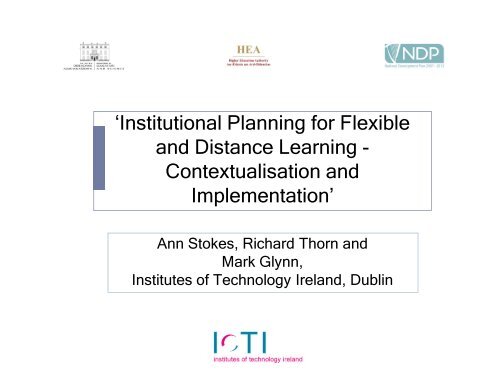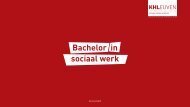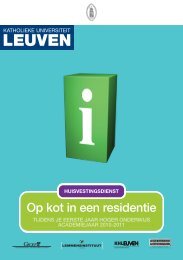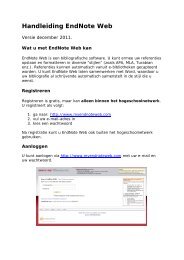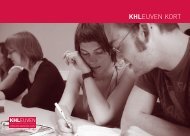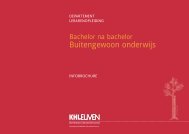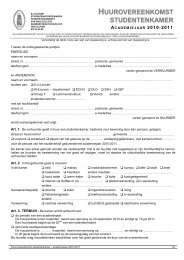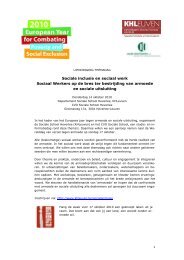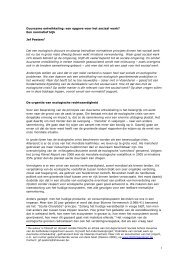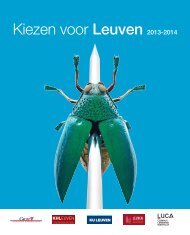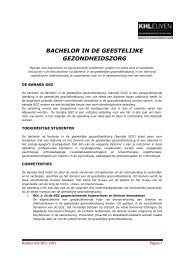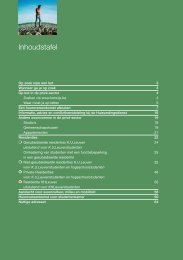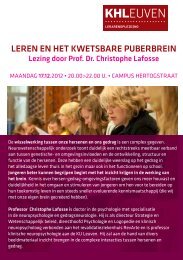'Institutional Planning for Flexible and Distance Learning ...
'Institutional Planning for Flexible and Distance Learning ...
'Institutional Planning for Flexible and Distance Learning ...
Create successful ePaper yourself
Turn your PDF publications into a flip-book with our unique Google optimized e-Paper software.
‘Institutional <strong>Planning</strong> <strong>for</strong> <strong>Flexible</strong><strong>and</strong> <strong>Distance</strong> <strong>Learning</strong> -Contextualisation <strong>and</strong>Implementation’Ann Stokes, Richard Thorn <strong>and</strong>Mark Glynn,Institutes of Technology Irel<strong>and</strong>, Dublin
Layout Lifelong <strong>Learning</strong> <strong>and</strong> the European Union Lifelong <strong>Learning</strong> <strong>and</strong> Irel<strong>and</strong> The Institutes of Technology <strong>and</strong> Lifelong <strong>Learning</strong> Is it Working? Conclusions2
Lifelong <strong>Learning</strong> <strong>and</strong> the European Union Growing interest in LLL in EU since early 1990’s White papers in 1994 <strong>and</strong> 1995 Community Action Programmes By 2000’s LLL had become an organising theme Lisbon Strategy3
The 2000’s in the EU Lisbon Strategy The Memor<strong>and</strong>um on Lifelong <strong>Learning</strong> Making a European Area of Lifelong <strong>Learning</strong> a Reality Education <strong>and</strong> Training Work Programme 20104
The Targets <strong>for</strong> 2010 The share of low achieving 15 year olds in reading shoulddecrease by at least 20% The average rate of early school leavers should be nomore than 10% At least 85% of 22 year olds should complete uppersecondary education The total number of graduates in maths, science <strong>and</strong>technology should increase by at least 15%, while thegender imbalance in these subjects should be reduced The average participation of working adults, population inlifelong learning (age group 25-64) should reach at least12.5%5
ProgressPercentage of population aged 25-64 participating in education <strong>and</strong> trainingin the four weeks prior to the survey, 2000-20066
Education <strong>and</strong> Training 2020 – Strategic Objectives Making lifelong learning <strong>and</strong> mobility a reality Improving the quality <strong>and</strong> efficiency of education <strong>and</strong>training Promoting equity, social cohesion <strong>and</strong> active citizenship Enhancing creativity <strong>and</strong> innovation, includingentrepreneurship, at all levels of education <strong>and</strong> training New targets!7
EU Lifelong <strong>Learning</strong> Instruments <strong>and</strong> Bologna Process ECTS (European Credit Transfer System) BMD (Bachelor, Master, Doctorate) Diploma Supplement (part of EUROPASS) The European Qualifications Framework (EQF) EUROPASS The European Credit System <strong>for</strong> Vocational Education<strong>and</strong> Training (ECVET) European Quality Assurance Framework <strong>for</strong>Vocational Education <strong>and</strong> Training (EQARF)8
Where Does EU Policy on Lifelong <strong>Learning</strong> St<strong>and</strong>? Lack of workable <strong>and</strong> agreed strategies <strong>for</strong> implementation Lack of equitable financing system Underestimated resistance to change among mainstakeholders in traditional education More effective national initiatives Inadequate use of learning competences as a learningmethodology Implementing lll remains a challenge9
Lifelong <strong>Learning</strong> <strong>and</strong> Irel<strong>and</strong> 1995 – White Paper – Charting our Education Future 1998 – Green Paper - Adult Education in an Era of Lifelong<strong>Learning</strong> 2000 – White Paper – <strong>Learning</strong> <strong>for</strong> Life 2007 – National Skills Strategy 2008 – National Plan <strong>for</strong> Equity of Access to HigherEducation 2008-2013 20% of full time <strong>and</strong> 27% of total students to be mature by 2013 17% of students to be studying part-time/flexibly 30% of students to enter by non-st<strong>and</strong>ard entry routes10
Key Actions National Access Office Strategic Innovation Fund Back to Education Allowance Labour Market Activation Initiatives National Framework <strong>for</strong> Qualifications11
Why is it so Important in Irel<strong>and</strong>?Long Term Skills Imbalances12
Why is it so Important in Irel<strong>and</strong>?c. 4% unemployment in 2006 to c.14% in mid-201013
Why is it so Important in Irel<strong>and</strong>Percentage of population aged 25-64 participating in education <strong>and</strong> trainingin the four weeks prior to the survey, 2000-200614
Key Actions National Access Office Strategic Innovation Fund Back to Education Allowance National Framework <strong>for</strong> Qualifications Labour Market Activation initiatives15
Per<strong>for</strong>mance16
What are the Gaps? Funding Participation levels Flexibility Progression Recognition of Prior <strong>Learning</strong> Legislation17
The Institutes of Technology <strong>and</strong> Lifelong <strong>Learning</strong> 1970’s to 1980’s 1990’s 'The principal function of a college shall, subject to the provisionsof this Act, be to provide vocational <strong>and</strong> technical education <strong>and</strong>training <strong>for</strong> the economic, technological, scientific, commercial,industrial, social <strong>and</strong> cultural development of the State withparticular reference to the region served by the college...'18
The Institutes of Technology <strong>and</strong> Lifelong <strong>Learning</strong> –the ‘Noughties2003 – The ‘Fottrell’ report2004 – OECD review of higher education2004 – Ahead of the Curve – Enterprise Strategy Groupreport2006 – Strategy <strong>for</strong> Science, Technology <strong>and</strong> Innovation2007 – National skills strategy19
The Institutes of Technology <strong>and</strong> Lifelong <strong>Learning</strong> –the ‘NoughtiesA ‘Mission Statement’Career focused educationPromotion of equality of access, transfer <strong>and</strong>progressionRecognise <strong>and</strong> give credit <strong>for</strong> priorPromotion of a research ethos aligned with thedevelopment of a national innovationIntegration of research <strong>and</strong> teachingDevelopment of learning communitiesGraduates characteristics20
From Strategic Intent to ActionStrategic Innovation FundEducation in EmploymentSupported <strong>Flexible</strong> <strong>Learning</strong>Supported <strong>Flexible</strong> <strong>Learning</strong>www.BlueBrick.ieCapacity building in each IoTCentral supportsPer<strong>for</strong>mance measurement system21
www.BlueBrick.ie22
Capacity Building in Each Institute Staff training <strong>and</strong> development Modification of internal business processes Promotion of the activity internally <strong>and</strong> externally Increased ef<strong>for</strong>ts to grow student registrations on parttime <strong>and</strong> flexibly delivered courses.23
Capacity Building in Each Institute24
Is it Working?The Number of Part Time Higher Education Students Expressed as aPercentage Change Between 2005/2006 <strong>and</strong> 2008/20092008/2009 2007/2008 2006/2007 2005/2006 % ChangeFull-Part-Full-Part-Full-Part-Full-Part-Full-Parttimtimtimtimtimtimtimtimtimtime54,464 15,025 51,572 15,909 52,842 14,544 52,229 15,200 4% -1%78% 22% 76% 24% 78% 22% 77% 23%25
Number of AwardsCumulative Special Purpose Awards fromall IoT's 2007-09 (July' 09) (excepting DIT)7060504030201002007 2008 2009Level 6 34 45 62Level 7 7 8 12Level 8 0 1 10Level 9 1 1 1Is it Working?26
Number of AwardsCumulative Minor Awards from all IoT's2007-09(July '09) (excepting DIT)25201510502007 2008 2009Level 6 8 16 21Level 7 1 1 2Level 8 1 2 19Level 9 1 3 3Is it Working?27
Is it Working?The number of educational offerings onwww.BlueBrick.ie At time of launch -260 – currently - >400Number of staff trained in flexible deliverymethods in the institutions in the system (For 2009 only) 1200 person days of training28
ConclusionsEU PolicyLifelong <strong>Learning</strong> in Irel<strong>and</strong>Strategic Intent to ActionIs it Working?29
‘From Fixed to <strong>Flexible</strong> <strong>Learning</strong> –Measuring System Change in Irish Higher Education'‘When you can measure what you are speakingabout, <strong>and</strong> express it in numbers, you know somethingabout it ... (otherwise) your knowledge is of a meagre <strong>and</strong>unsatisfactory kind; it may be the beginning ofknowledge, but you have scarcely in thought advanced tothe stage of science’. (Lord Kelvin, (1824-1907)30
Thank You <strong>and</strong> Questions31


